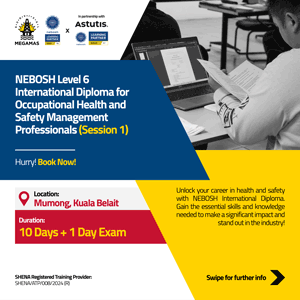The garden had some fresh landscaping, with new garden beds ready for planting. I’ve been dreaming of what to fill them with – roses, perhaps, or majestic elephant ears?
This, of course, required a bit of soil. In my enthusiasm for creating an Edenic garden, I may have overestimated my needs. At BND5 for eight bags, buying 16 seemed like a bargain.
However, once I got home, though my wallet thanked me, my lower back had other thoughts.
Yes, readers, at 32, I’ve got a bad back.
AGE DOESN’T MATTER
Many people, myself included, tend to associate back pain with aging, thinking it’s one of those inevitable markers of getting older.
But while it’s true that wear and tear over time can contribute to back issues, back pain can strike anyone, regardless of age.
The young athlete who pushes their body a little too hard in training, the office worker hunched over their desk for hours, the parent lifting their child – back pain is an equal-opportunity annoyance.
If, like me, you’ve found yourself with an aching lower back after a day of garden planning (or perhaps lifting heavy bags of soil with overconfidence), there are plenty of tools and techniques that can help keep your back in check.



POSTURE CORRECTORS
One of the simplest tools that can make a world of difference is a posture corrector. Many of us don’t realise how much poor posture contributes to back pain.
Whether you’re sitting at a desk, standing for long periods or lifting weights at the gym, maintaining the right posture is essential.
Posture correctors gently remind you to sit or stand up straighter, easing the strain on your back muscles.
WEIGHTLIFTING BELTS
For those who enjoy lifting weights, investing in a good weightlifting belt can be a lifesaver.
These belts are designed to provide extra support to your lower back while you lift, helping you maintain proper form and reducing the risk of injury.
Even if you’re not a gym regular, a belt can come in handy for any activity that involves lifting heavy objects (such as, say, an ill-advised amount of soil bags). It’s a simple precaution that can prevent a world of pain.
ERGONOMIC CHAIRS
If your back pain stems from sitting at a desk for hours on end, consider upgrading to an ergonomic chair.
These chairs are specifically designed to support your spine, encourage good posture, and reduce the strain that long hours of sitting can place on your back.
Pair that with a standing desk, if possible, to alternate between sitting and standing throughout the day, keeping your back muscles engaged and flexible.
STRETCHING AND STRENGTHENING EXERCISES
No discussion about managing back pain would be complete without mentioning the importance of stretching and strengthening exercises.
Regularly stretching your back and legs can help improve flexibility, while strengthening your core muscles provides better support for your spine.
Incorporating exercises such as yoga, Pilates or even a few targeted stretches into your routine can go a long way toward preventing and alleviating back pain. You don’t need to be a fitness fanatic to make this work – just a few minutes a day can help.
ACCEPT, DON’T IGNORE
The first step to managing back pain is accepting that you have it.
We all get a bit defensive when our bodies don’t work as they should, but ignoring the problem won’t make it disappear.
The issue isn’t having a bad back; it’s not seeking help when it strikes.
Too often, people brush off back pain as something they must endure until it becomes unbearable.
But living with back pain doesn’t mean you have to give up on the activities you love. It just means finding new ways to support yourself – literally and figuratively.
So, the next time your back acts up, don’t just grit your teeth and bear it. Reach for that posture corrector, stretch those muscles, and maybe reconsider lifting all those soil bags in one go. – Wardi Wasil






